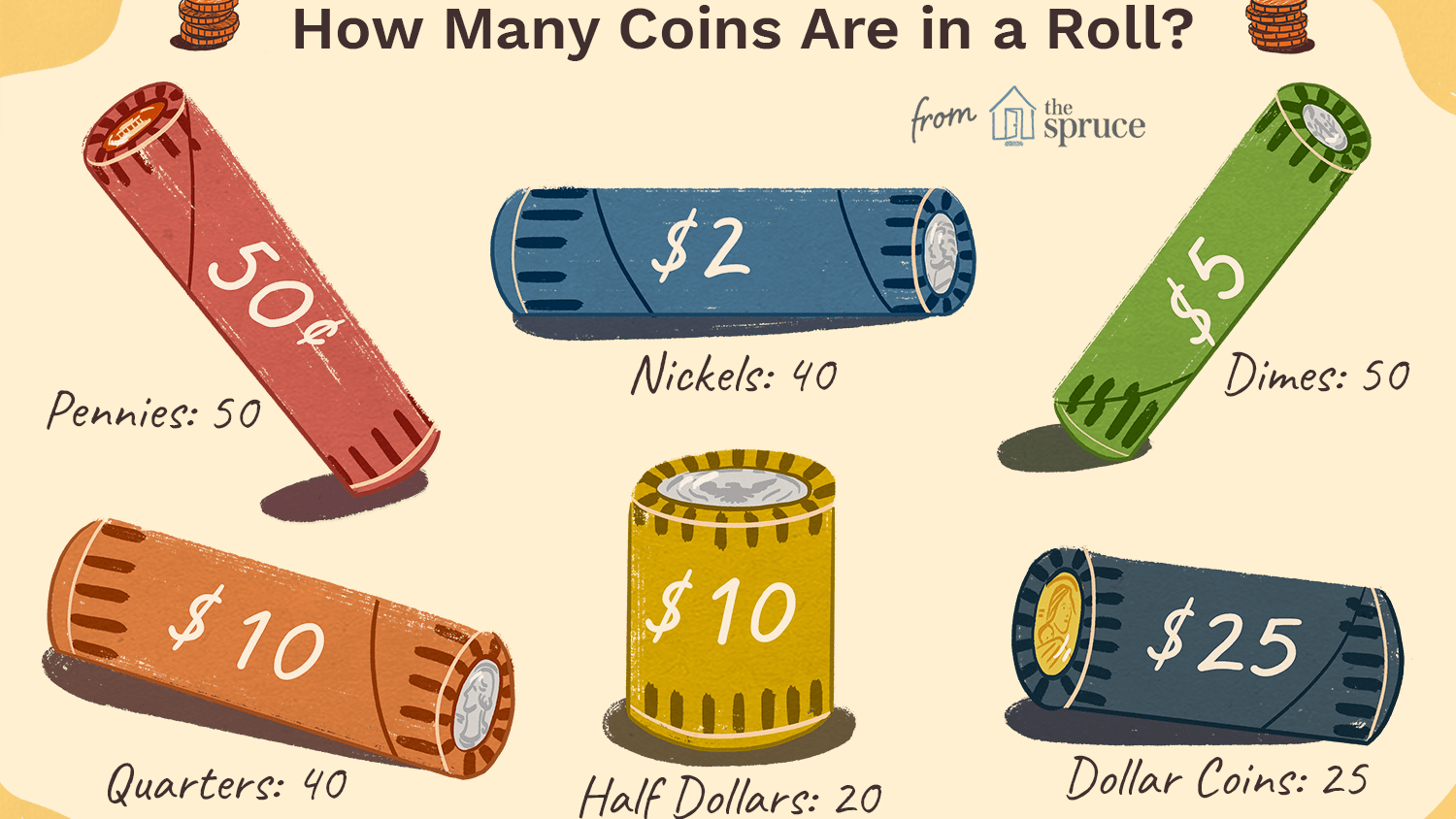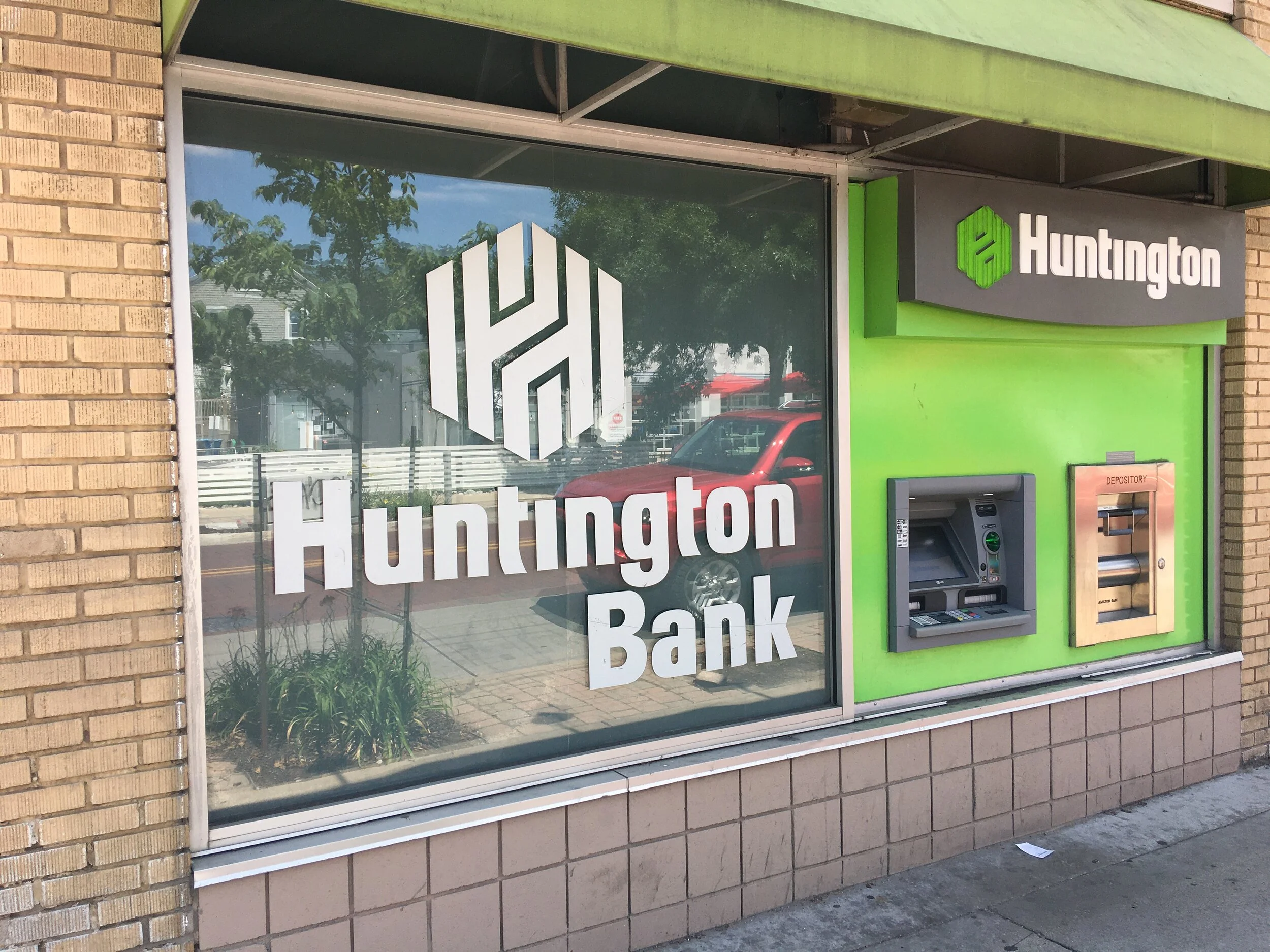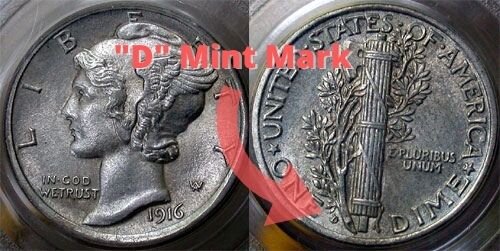Coin Roll Hunting
What Is Coin Roll Hunting?
Coin roll hunting (CRHing) is the process of searching through rolls of coins in hopes of finding various, collectable coins such as ones made primarily of silver, special mint marks, mint dates, or even coins with errors stamped on them.
CRHing is a great way to quickly and cheaply find coins that may be missing from your coin collection!
**DISCLAIMER - As an Amazon Associate I earn from qualifying purchases. The links in the article are affiliate links that help support this blog and my channels. Metal Detecting Life is supported by you, the readers! When you purchase something I recommend via my links, I may get an affiliate commission (terms of service) — but it never affects the price you pay. Cheers!
Individual Coin Rolls
When referring to rolled coins, these are the coins you typically see rolled up in paper or plastic sleeves, often in differing colors that helps indicate the denomination of the coins inside. These rolls also identify the total amount of coins contained within each individual coin roll.
Amounts represented that it takes to complete each roll of various coinage. Photo courtesy of TheSpruceCrafts
Let’s look at USD coin rolls for example. Quarters will typically be in an orange paper roll in amounts of $10.00, which amounts to 40 quarters (40 x $0.25 = $10) per roll.
Pennies on the other hand are typically rolled in a red paper roll with a denomination of $0.50 which of course means you’ll have 50 pennies to search through per roll.
Boxes Of Coins
Bulk orders usually consist of purchasing entire boxes of coins that range from $25.00 all the way up to $500 for an entire box. There are several ways you can acquire rolled coins to search through.
Full boxes of coins are made up into even larger dollar amounts and can usually be ordered through your local bank.
*DISCLAIMER - At the current time of publishing this article, there is a national coin supply shortage and banks may not have coins available in bulk.
How To Get Rolled Coins To Search?
Call To Order From Your Local Bank
You can always purchase rolled coins from your local bank branch. If you plan on making a large, bulk purchase of coins, it’s best to call ahead because they may need to order them for you and typically they will be available the following business day.
Ask A Bank Teller During Your Visit
Photo Credit: Johnathan Cooper - Unsplash
If you are just hoping to search through several rolls of coins, then you can usually walk in to a local branch and ask your teller for a few rolls on the spot, which they should have available on any given day. Often times, a customer who came in just before you probably dropped off a few rolls of coins that they had saved up from change given to them throughout the course of the week or month.
Ask A Store Clerk
Photo Credit: Patrick Tomasso - Unsplash
Because local stores are a common place of business and currency exchange, you can almost always find coins available from them and they may be willing to sell you a few rolls, especially if they have excess amounts and would rather have a few dollar bills on hand instead.
Ask Family & Friends
Photo Credit: Priscilla du Preez - Unsplash
Family and friends are a great source to ask. Ask them to coin roll hunt any coins they’ve been hoarding in their coffee cans, mason jars, or wherever they’ve just been tossing all of their change in to over the course of the last few months or even years! Even though those coins are not rolled, the same concept still applies by cherry picking the desired coins out of the pile that are collectable.
What To Look For When Coin Roll Hunting?
Depending on what type of collector you are, there are many different types of coins you can look for while coin roll hunting.
The fully silver edges represent coins that are most likely made from silver as opposed to their two-toned counterparts that are made of copper and nickel. Photo courtesy of thehuntforsilver
Old & Silver Coinage
Photo courtesy of thehuntforsilver
Most coin roll hunters are searching for older coins minted circa pre-1964. That is because dimes, quarters, and half dollars minted in 1964 or earlier were made of 90% silver. Half dollar coins from 1965-1970 contain a make-up of 40% silver.
These dates are sought after because silver is no longer used in the standard coin minting process as other metals are now used such as copper, zinc, nickel, and even brass.
The reason that these coins are so collectable is because the weight of each coin is worth more in silver scrap value than the actual face value of the coin.
*For example, a quarter minted in 1964 (made of 90% silver) is valued roughly at $4.66! That’s over an 18x profit from face value! The stock market can’t even touch those types of return on investment!
*Example based on spot silver prices as of 3/7/2022
Other types of older, collectible coins can be found in various denominations such as Wheat Pennies, Indian Head Pennies, war nickels (contains 35% silver), Buffalo Nickels, V-Nickels, and Peace or Morgan Dollars (90% silver).
Mint Marks
A coin’s mint mark will tell you where the coin was originally made. Photo courtesy of TheSpruceCrafts
Coin collectors will also coin roll hunt to try and find coins with a particular mint mark on them. Coins in America came from 9 different mints throughout the years and only 4 remain active today (Philadelphia, Denver, San Fransisco, and West Point).
Each of these mints only produced a limited amount of each coin while in operation. The limited edition of coins from any particular mint during a year can severely impact the collectable value of a coin due to its scarcity or low mintage amount.
Do Mint Marks Impact Value?
Let’s look at the difference of one of the most famous and sought after dimes to ever be minted; the 1916-D Mercury dime. It has a mintage amount of 264,000 and is valued at $1,000 in “good” condition. A Mercury dime minted in San Fransisco (S) during the same year is valued at just $4 in the same “good” condition, with a total mintage of 10,450,000.
Various mint marks can have a severe impact on the value of a coin.
That is because there are 10,450,000 1916-S Mercury dimes minted compared to 264,000 1916-D Mercury dimes. The rarity of a 1916-D mint mark drives up the price based on supply vs demand principles and therefore makes it not only more valuable, but more collectable because there are only so few in existence as the Denver Mint only produced a small handful that year.
By the way, you are most likely to find a 1916-P “plain” Mercury dime as they are the most common with over 22,180,080 minted in to existence. To learn more about mint marks, mintage numbers, and coin values, check out Coin Mintages.
Die Errors
Notice the shadow “D” lightly stamped below the main mint mark above. This is a die error coin and is very collectable because of it’s uniqueness. Photo Courtesy of USA Coin Book
When coin roll hunting, be on the look out for die errors as these too can have value in the coin collecting community. Die errors are made when the original die-settings are not as the engineers intended and they end up producing a number of copies before noticing the error.
The 1955 double die obverse (DDO) penny is one of the most highly sought after error coins in existence! Photo courtesy of USA Coin Book
One highly sought after die error is the 1955 double die obverse penny. This is because it is one of the most obvious and prominent cases of double dies known to date. Collectors that are looking to score a profit on this particular error coin could expect anywhere between $750 up to $16,000 depending on the coin’s condition.
Complete list and description of die errors to look for.
Why Do People Coin Roll Hunt?
Notice the solid silver edge? I found this silver quarter during a recent coin roll hunting expedition.
People will coin roll hunt because as I mentioned earlier, coin roll hunting can be very profitable. If you are making 19x the face value (scrap value) of a silver coin, that’s an amazing return on investment and it doesn’t really cost you anything other than your time!
Other coins can give even higher returns if found because they are worth even more based on their low mintage rates, uniqueness of die errors, or are very desired by other collectors. Prices, information, and values of many US coins can be found by getting yourself a copy of the Official Red Book 2024.
Sure, you’d spend a little on gas to stop at the bank to pick up a box of coins and $0.25 to replace the coin you pulled from a roll of quarters if you found that 1964-D silver Washington, but just make the stop at the bank on the way home from work or the grocery store while you are out running errands and that will save you a convenience trip.
Coin roll hunting allows you easy access to large amounts of coins in an organized manner so that you can maximize your time and potential profits. Photo Credit: Ugzka - Pixabay
People and coin collectors participate in the art of coin roll hunting because it is an extremely efficient way to be able to have access to and to search through a large amount of coins all at once and is easy to pull out coins to add to their collection.
Hunting through rolls of coins also allows a person to stay much more organized because once the coins in a particular roll have been searched thru, they can reuse the roll that those coins came from (assuming it isn’t ripped open) and reinsert any coins that were not pulled out to be saved.
How To Return Coins When You’re Done?
When coin roll hunting, many people don’t think about the return process. In fact, many think that because they are “buying” those coins from the bank, they are now stuck with them and have to spend them at local stores. While this could be done if desired, there is a very easy process to return your coins when you are done coin roll hunting.
Photo Credit: Tsh Oxenreider - TheArtOfSimple
Any coins that are pulled out of a roll need to be replaced by another coin of the same denomination that is not a desired collectable.
For example, if I pull out a 1919-S wheat penny from a roll, I have a pile of common pennies next to me and I will replace it with any of them, such as a 2014-D zinc penny that has been in circulation and I probably got as change from the gas station and is not nearly as collectable.
The example (below) walks thru the steps of “buying & returning” a box of pennies for coin roll hunting from a local bank.
Coin Roll Hunting Tips & Tricks
Coin roll hunting can be a very tedious hobby or way to collect coins. To help speed up searching, here are a few tips and tricks that may improve finds:
When searching for silver coins, don’t look at the date on the face of each individual coin. Instead, hold all of the coins on edge and look for solid silver edges on each coin. A solid silver edge will indicate a silver coin (pre-1964). Just be careful, Canadian dimes and quarters will appear to have a solid silver edge as well, but that does not necessarily mean they are silver and can trick you!
Try dropping a silver coin on to a hard surface such as a table vs a non-silver coin of the same type (2 quarters). The silver coin will have a higher pitched ringing tone compared to the non-silver coin. Some coin roll hunters will do this drop test to listen for silver rather than looking at dates or edges.
Pennies come in two varieties, zinc and copper (pre-1982). If looking for Wheat or Indian Head pennies, skip over the brighter, shiny coins because those will all most likely be the zinc (newer) pennies. The darker toned pennies will be the copper coins, which include Indian Head and Wheat pennies.
Ask your bank teller for coin rolls of various denominations during each visit to stock up. Most banks will give you paper coin rolls for free that you can then use to re-roll any coins sleeves that you had to tear or rip open while CRHing.
Never return coins or boxes of coins from where you originally got them. You will risk searching the same rolls of coins or boxes over and over again. Always have a “buy” bank branch where you pick up coins and then a “sell/dump” bank branch that you deposit and take coins back to.
Be nice to your bankers (bring them donuts), they may save extra rolls or individual coins that are on their tray for you!
Keep Your Coins Protected & Organized
Various coin-sized cardboard cutouts allow for both front and back of coins to be displayed along with room to write and label each sleeve as you see fit. Coin binder includes plastic sleeve sheets that can hold up to 20 coin cutouts each to help keep your collection organized and all in one place.
In Closing…
Coin roll hunting can be a great way to easily find and add coins to anyone’s coin collection. It is also possible to even make a little bit of profit on the side should you find that collectable die error or a handful of silver coins.
No matter what your goals, coin roll hunting is a fun side hobby and every roll you open is like a treasure hunt in and of itself!
Still not sure what to look for? Join an online forum that talks about CRHing such as the one over at the Friendly Metal Detecting Forum. There are plenty of good coin enthusiasts there that would be willing to help you along during your coin roll hunting adventures!
Have you tried coin roll hunting? What have you found? What is your favorite type of coin to search through? Leave a comment and let me know!
*As an Amazon Associate I earn from qualifying purchases.






























